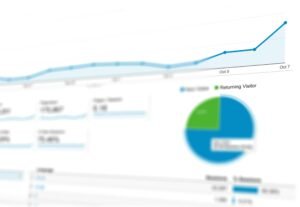How Analyzing PPC Performance Metrics Drives Business Growth
In the rapidly evolving digital landscape, understanding and analyzing Pay-Per-Click (PPC) metrics is crucial for crafting successful advertising strategies that align with business objectives and drive growth, asserts Kevin Rea, a recognized authority in the field. Rea emphasizes the necessity of comprehensively understanding PPC metrics, from fundamental to advanced, to optimize campaign performance and maximize business returns.
The PPC Revolution in Digital Advertising
PPC advertising revolutionized digital marketing by enabling precise data measurement, affording insights into user behavior beyond the purview of traditional marketing avenues. Advertisers, for the first time, could track intricate details like user interactions and conversions, providing a definitive Return on Investment (ROI) for each ad. This ability to track the journey from ad impressions to conversions marked a transformative shift in advertising dynamics, analogous to the impact AI tools have on tech news and SEO strategies today.
Key fundamental PPC metrics form the backbone of campaign analysis. Metrics such as impressions, clicks, average cost per click (CPC), click-through rate (CTR), unique sessions, and conversion value are indispensable for gauging campaign performance and pinpointing issues like technical glitches or market competition. However, Kevin Rea advises advertisers not to halt at these basic metrics.
Diving Deeper with Advanced Metrics
Advanced metrics offer more nuanced insights that tie business goals directly to advertising strategies. Metrics such as Return on Ad Spend (ROAS), Profit on Ad Spend (POAS), Lifetime Value (LTV), new user acquisition, and brand recall deliver a more robust analysis by connecting the dots between advertising efforts and business outcomes more effectively than standard metrics alone.
Leveraging tools like Looker Studio and Google Analytics 4 for real-time data reporting enhances this analytical approach by integrating data from multiple platforms, including eCommerce platforms like Shopify and WooCommerce, hence presenting a comprehensive business performance overview.
Rea illustrates that focusing on advanced metrics can change the narrative of a campaign’s success. For instance, a campaign might seem underperforming based on ROAS alone, but when assessing the LTV, the campaign might reveal high profitability driven by customer retention and prospective sales. Thus, advertisers should prioritize metrics like POAS and LTV to gain a meaningful understanding of performance.
Aligning Metrics with Business Objectives
Aligning advertising metrics with business objectives—be it customer base expansion or maximizing profits—frames a campaign strategy that emphasizes substantial business growth. This alignment assists advertisers in identifying which campaigns warrant increased investment based on actual returns rather than superficial metrics alone.
The responsibility, however, also falls on educating clients and stakeholders on prioritizing the most relevant metrics. Instead of dwelling solely on clicks or CTR, advertisers and businesses need to shift focus towards more substantial insights, such as how effectively an advertising channel fulfills its intended purposes and contributes to business success in a data-driven era.
Local Impact and Community Insights
For local businesses within the community, especially those in competitive markets like the Rio Grande Valley, understanding these PPC metrics is crucial for staying ahead. “In our industry, knowing how to interpret these metrics can differentiate a successful campaign from a failed one,” notes Maria Hernandez, a digital marketing consultant in Brownsville.
Understanding and implementing advanced PPC metric analysis can also empower local businesses to compete with larger, resource-rich corporations by enabling precise targeting and efficient budget allocation. Developers and small business owners in the community are encouraged to seek education on metric analysis or consult experts to enhance their online marketing endeavors.
Looking Forward
As PPC advertising continues to evolve, the community of marketers, businesses, and individuals must remain vigilant. By continually fostering an understanding of performance metrics, adapting to technological advances in SEO and leveraging AI tools, they can drive substantial business success and growth.
Future implications of these advanced analytical techniques extend beyond individual businesses. They suggest a broader economic strengthening, increased local employment opportunities, and a vibrant, competitive market environment.
In conclusion, analyzing PPC performance metrics extends far beyond mere data accumulation. It demands a strategic approach that ties advertising initiatives back to core business goals. This approach ensures that campaigns not only engage users but also deliver tangible results, ultimately paving the way for sustainable business growth in an ever-competitive, data-centric marketplace. Local resources such as business workshops and training sessions are available for those seeking to deepen their understanding of PPC metrics and leverage them effectively to advance their advertising strategies.




